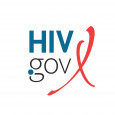Mpox has been present in west, central and east Africa for decades, with the first human case identified in 1970. In May 2022, a global mpox outbreak caused by a specific strain of the virus (referred to as “clade IIb”) was the first epidemiologic evidence of community mpox transmission outside of the historically affected African regions. More than 80,000 cases and 140 mpox-related deaths have been reported across 111 countries since the outbreak began, including more than 30,000 cases and 42 deaths in the United States. The origin of mpox remains unknown, but it belongs to a family of viruses called orthopox viruses. Variola virus (the cause of smallpox) is also an orthopox virus, but mpox disease is not as deadly as smallpox.
Since the start of the global outbreak, researchers, epidemiologists and healthcare providers have been monitoring transmission patterns and conducting research to better understand the natural history, clinical features and disease progression of mpox. These efforts are essential for informing the response to the current global outbreak, preventing future outbreaks and reducing the burden of mpox in countries where it has been a longstanding health threat.
A majority of cases in the global clade IIb outbreak have been reported in gay and bisexual men and other men who have sex with men, and an estimated 40% of reported U.S. mpox cases have been in people living with HIV. Individuals with advanced HIV disease are vulnerable to severe mpox infection, and most reported mpox deaths have been in immunocompromised individuals.
While much has been learned about mpox in the past year, limited data are available on the immune response to mpox infection in people living with HIV, and even less information is available on women living with HIV who acquire mpox. Scientists at the National Institute of Allergy and Infectious Diseases (NIAID), part of the National Institutes of Health (NIH), recently described the clinical and immunological features of a woman living with HIV who acquired mpox while participating in a long-term NIAID study at the NIH Clinical Center. They reported these findings in the Journal of Infectious Diseases.
In the reported case, the study participant presented with lesions consistent with mpox in August 2022 and laboratory results confirmed mpox infection. Her HIV viral load was suppressed on antiretroviral therapy, and she experienced a mild mpox case with lesions on her face, wrist and forearm. She did not receive any mpox treatment due to her mild case.
Despite these minor symptoms, laboratory results showed the study participant experienced dramatic changes in several types of immune cells suggesting her body mounted a robust immune response to mpox infection: data showed increased levels of B cells (associated with antibody production) and changes in some types of T cells (which trigger other immune functions and destroy viruses).
Of interest, laboratory findings showed no significant change in the size of the participant’s HIV reservoirs, which suggests mpox infection did not have any effect on the clinical HIV status of this participant.
The study authors indicate more research is needed to understand the impact of mpox in people living with HIV and suggest this study may offer insights to guide future, larger studies.
NIAID is sponsoring several studies on mpox vaccination and treatment. More information about active studies, including contact details for enrollment, is available here:
JYNNEOS vaccine study
STOMP tecovirimat treatment studyExit Disclaimer
PALM tecovirimat treatment study.
This blog post was published by HIV.gov on May 25, 2023.








Comments
Comments